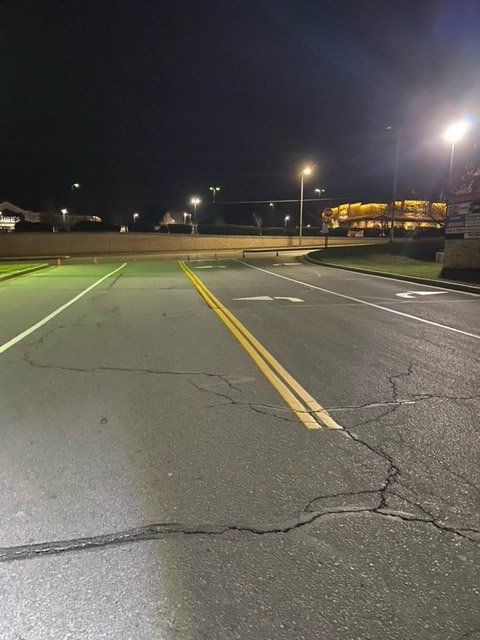Introduction
Parking lots might seem like mundane spaces, merely there for cars to rest, but they play a crucial role professional asphalt sealcoating in our daily lives. Whether you're heading to work, visiting a shopping center, or simply grabbing a bite to eat, the design and markings of parking lots are pivotal for safety and efficiency. This article delves deeply into Safety Standards in Parking Lot Design and Markings, providing insights into how proper planning can prevent accidents, enhance accessibility, and improve the overall experience for users.
What Are Safety Standards in Parking Lot Design?
Safety standards encompass regulations and guidelines that govern the layout, construction, and maintenance of parking lots. These standards ensure that parking areas are safe for both vehicles and pedestrians while also being compliant with legal requirements.
Importance of Safety Standards in Design
Implementing safety standards is not just about avoiding legal repercussions; it’s about creating an environment where users feel secure. Well-designed parking lots can minimize accidents caused by poor visibility or confusing layouts.
Key Regulations Governing Parking Lots
The design of parking lots must comply with various regulations like the Americans with Disabilities Act (ADA), local zoning laws, and fire safety codes. Understanding these regulations can help you create a compliant space.

Understanding ADA Compliance in Parking Lot Design
What Is ADA Compliance?
ADA compliance refers to adhering to standards set forth by the Americans with Disabilities Act. This legislation mandates asphalt driveway accessible features in public spaces, including parking lots.
Why Is ADA Compliance Important?
Failing to meet ADA requirements may lead to hefty fines and lawsuits. Beyond legal implications, accessibility enhances your business's reputation by promoting inclusivity.
Key Features of ADA-Compliant Parking
- Accessible Spaces: Clearly marked spots close to entrances. Proper Dimensions: Spaces should be at least 8 feet wide. Signage: Use clear signage indicating accessible spaces.
How to Achieve ADA Compliance
Consult with professionals experienced in ADA regulations. Regularly assess your parking lot layout for compliance. Implement necessary changes promptly.Parking Lot Layout: Designing for Safety
The Role of Layout in Safety
A well-thought-out layout minimizes confusion among drivers and pedestrians alike, thus reducing potential accidents.
Factors Influencing Layout Decisions
- Traffic Flow: Ensure smooth transitions between entry and exit points. Pedestrian Paths: Clearly designated walkways increase safety.
Best Practices for Safe Parking Lot Layouts
Use clear directional arrows on asphalt paving. Create pedestrian-only zones using barriers or landscaping. Mark crosswalks distinctly with high-visibility paint.Parking Lot Markings: The Unsung Heroes of Safety
Importance of Proper Markings
Markings serve as visual guides for drivers and pedestrians alike; they ensure everyone knows where to go.
Types of Markings Commonly Used
Directional Arrows guide traffic flow. Parking Space Lines define individual spots. Crosswalks indicate safe pedestrian paths.Choosing the Right Material for Markings
Opting for high-quality paint ensures durability against weather elements and wear over time. Asphalt companies often provide specialized marking services tailored to your needs.
Choosing the Right Asphalt Paving Contractor
Why Is It Important to Choose Wisely?
Choosing reputable asphalt paving contractors guarantees quality work that adheres to safety standards.
Factors to Consider When Hiring Contractors
Experience: Look for contractors who specialize in commercial paving services. References: Check reviews from previous clients. Estimates: Get detailed quotes covering all aspects of the job—like asphalt paving cost per square foot.Cost Considerations in Parking Lot Design
Understanding costs associated with designing a parking lot helps budget effectively without compromising quality.
Breakdown of Costs Associated with Paving
| Item | Estimated Cost | |----------------------------|---------------------| | Asphalt Paving | $3 - $5 per sq ft | | Striping | $0.25 - $0.75 per linear ft | | Sealcoating | $0.15 - $0.30 per sq ft |
Note: Prices vary based on location and contractor.
Maintaining Your Parking Lot: A Crucial Aspect
Regular maintenance ensures your parking lot remains safe and functional over time.
Key Maintenance Tasks
Sealcoating: Protects asphalt from UV rays and water damage. Crack Sealing: Prevents small issues from escalating into major repairs. Patching: Addresses significant wear areas promptly.FAQs About Safety Standards in Parking Lot Design
What is the purpose of having designated pedestrian walkways?- They improve safety by clearly separating vehicle traffic from pedestrian movement.
- Generally every 12-18 months or as needed if markings fade due to wear or weather conditions.
- High-quality traffic paint is recommended for longevity against elements like rain or sun damage.
- Yes, local regulations often dictate colors used for fire lanes (red) or accessible spaces (blue).
- Sealcoating typically ranges from $0.15 to $0.30 per square foot depending on factors such as location and contractor expertise.
- While some tasks can be DIY projects, hiring professionals ensures that work complies with safety standards.
Conclusion
In summary, understanding the complexities surrounding safety standards in parking lot design requires a comprehensive approach involving proper planning, adherence to regulations, regular maintenance, and engaging qualified professionals such as asphalt paving contractors or driveway paving companies when necessary.
By focusing on these elements—ADA compliance, effective layouts, appropriate markings, budgeting correctly, and ongoing upkeep—you can create a safe environment that benefits everyone involved while enhancing your property’s value at the same time!
This comprehensive exploration has aimed not only at educating readers about essential practices but also at encouraging them to take actionable steps toward improving their own properties' designs!